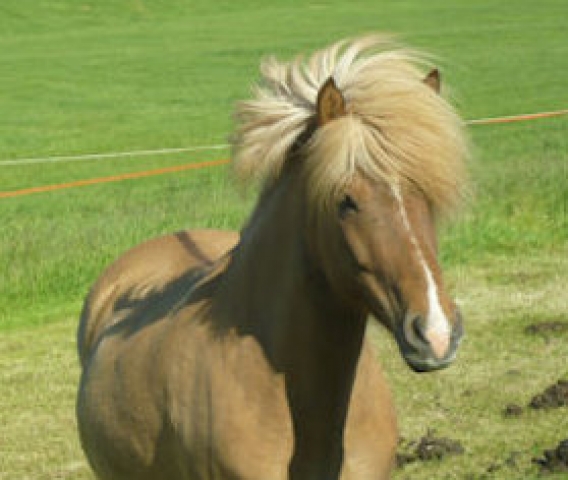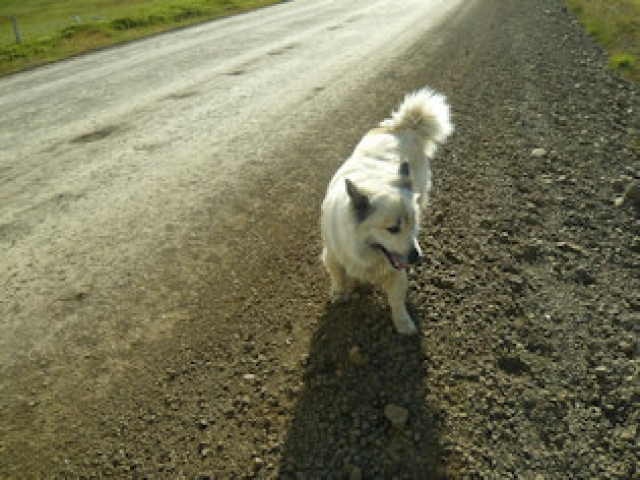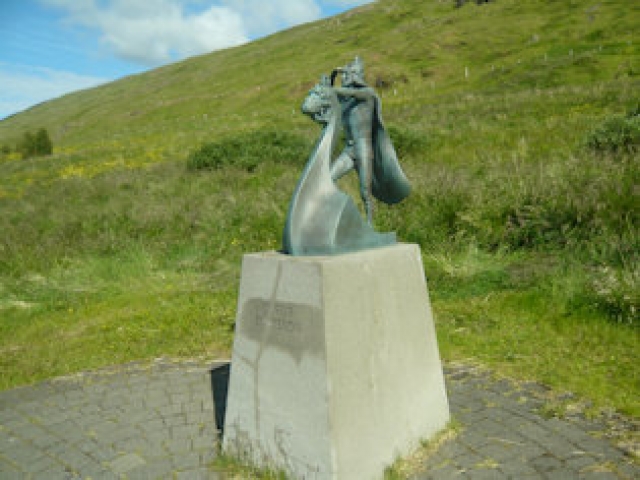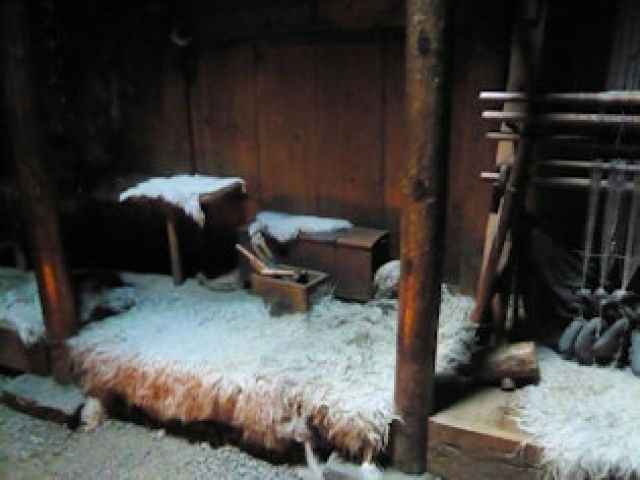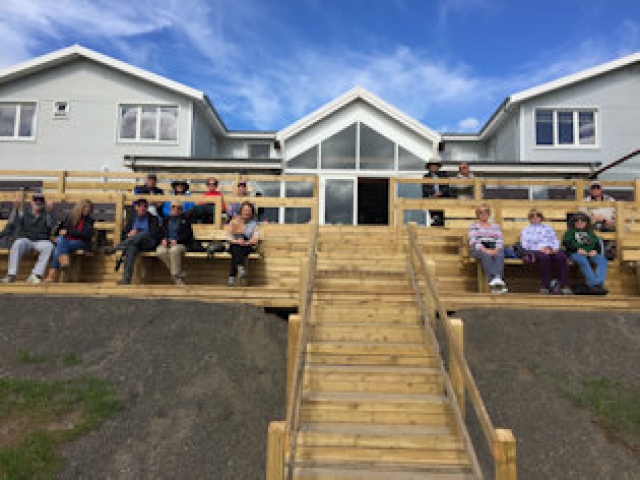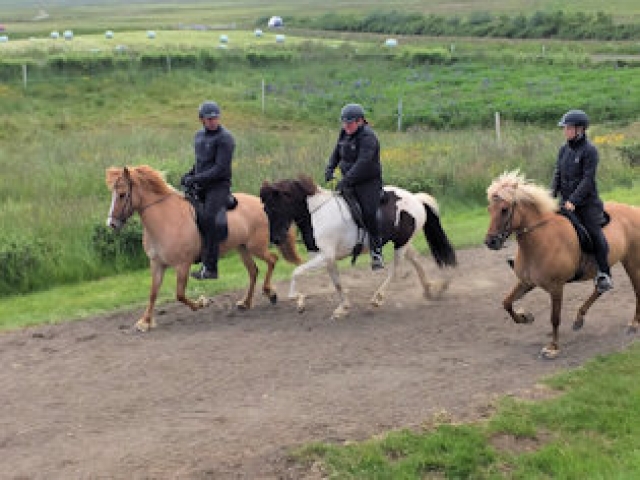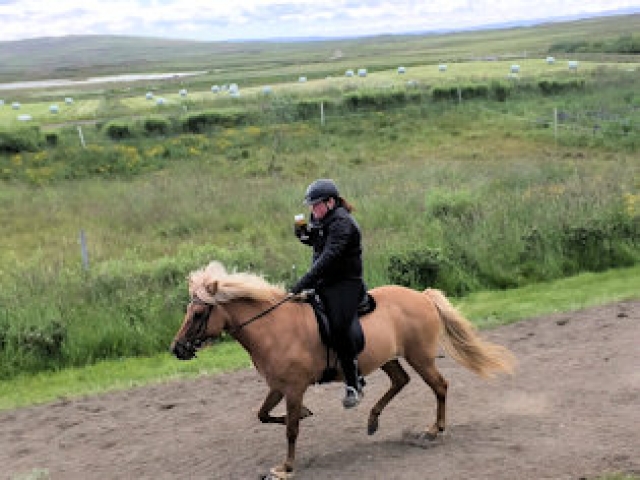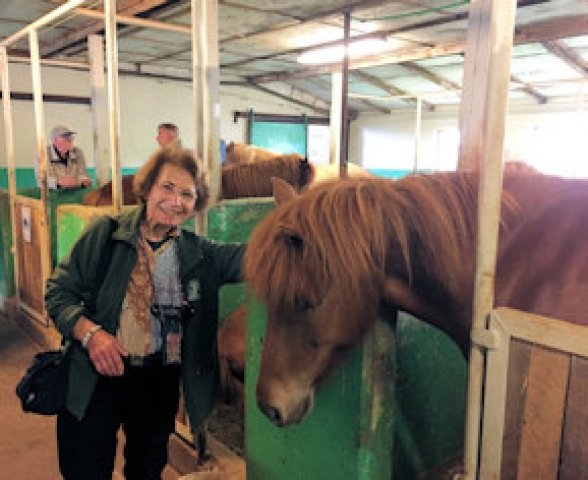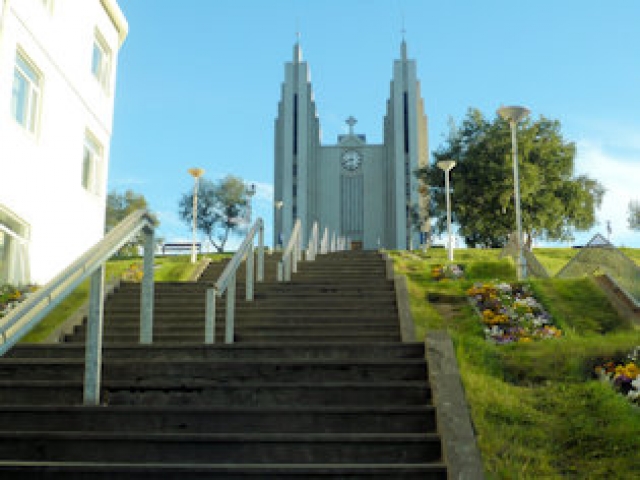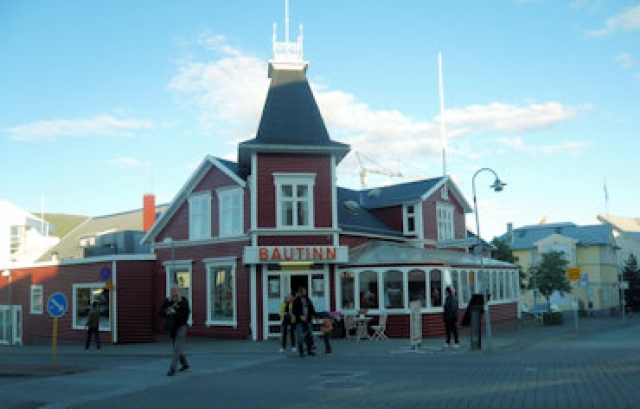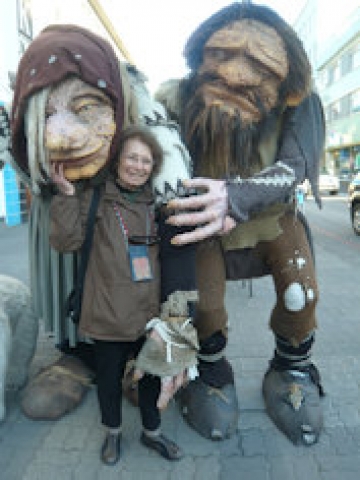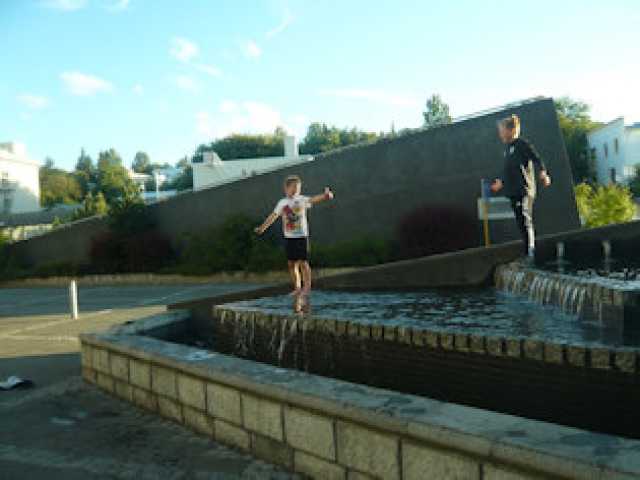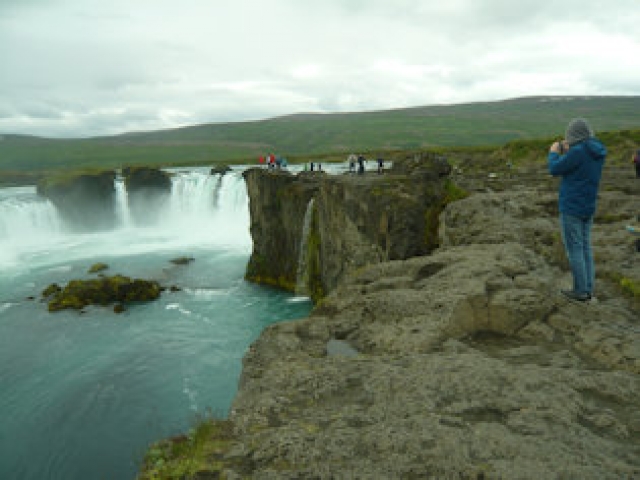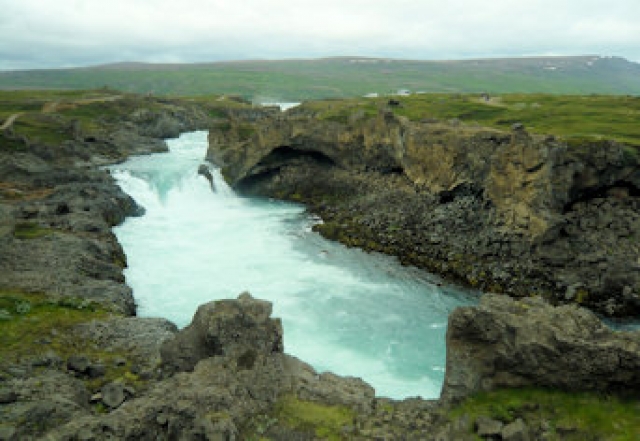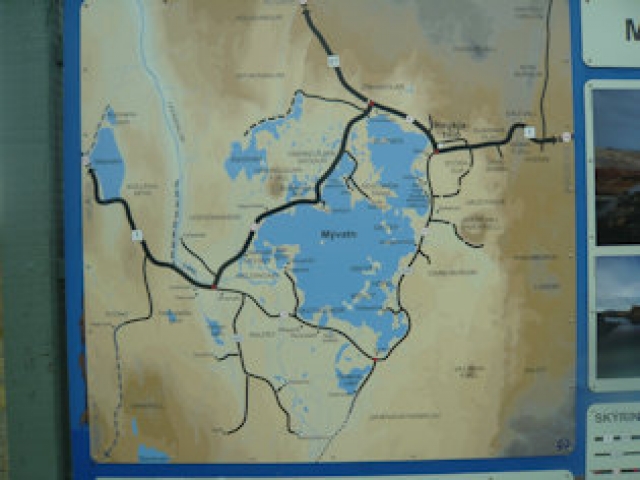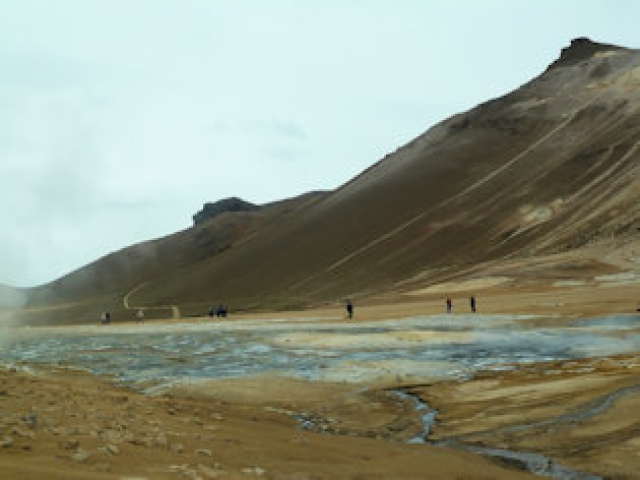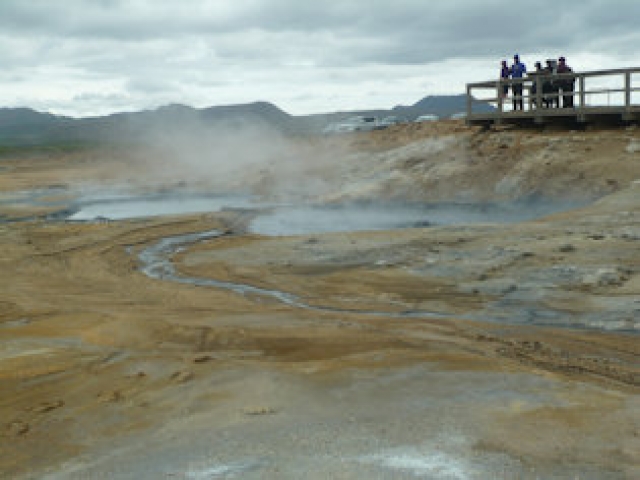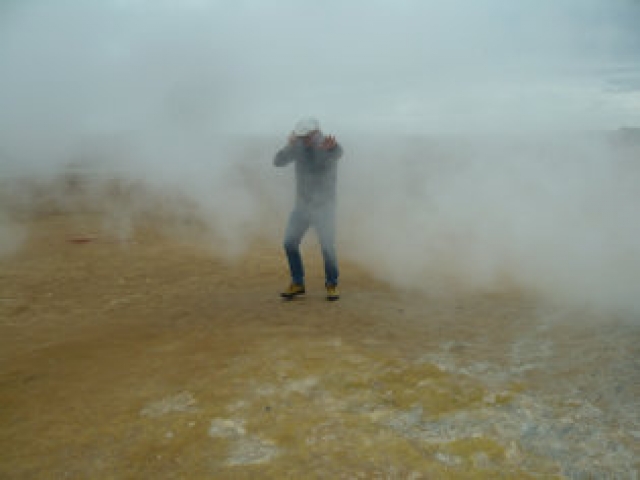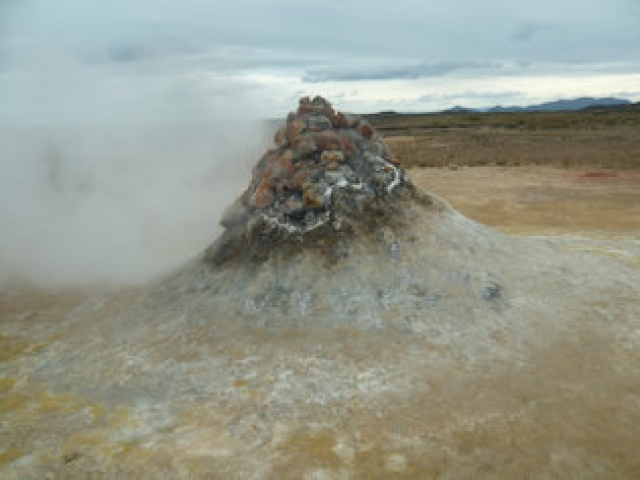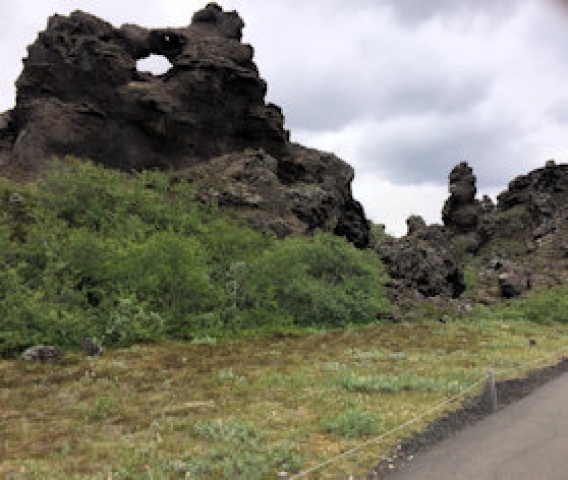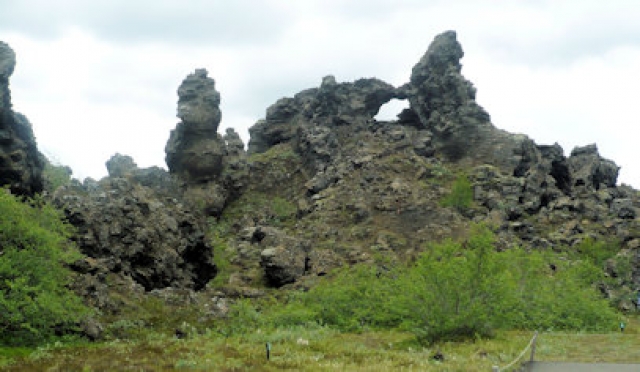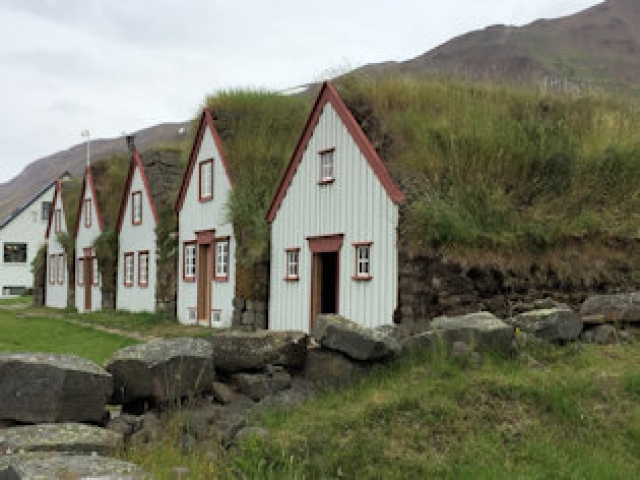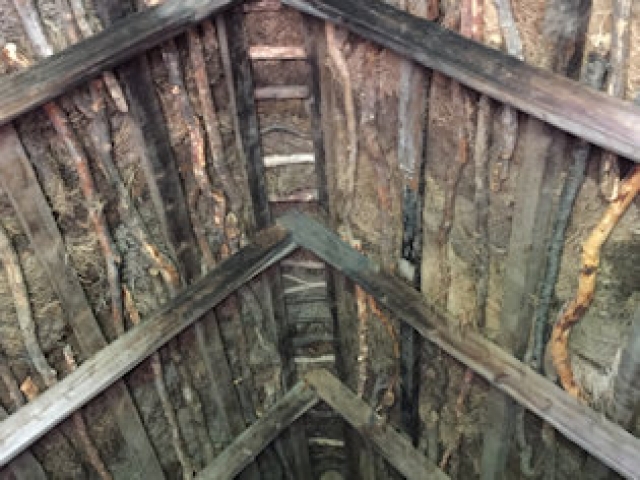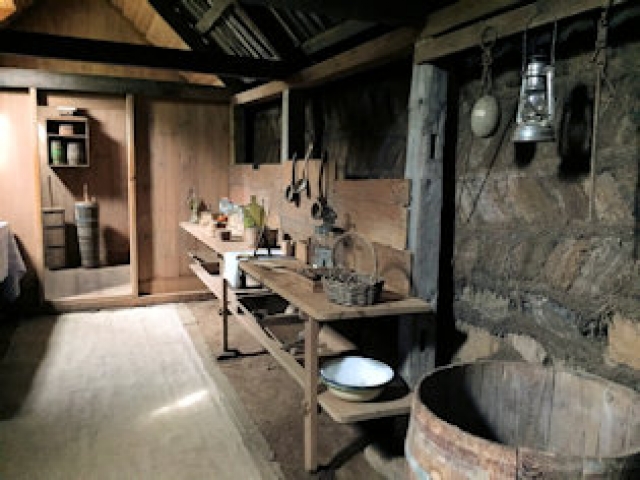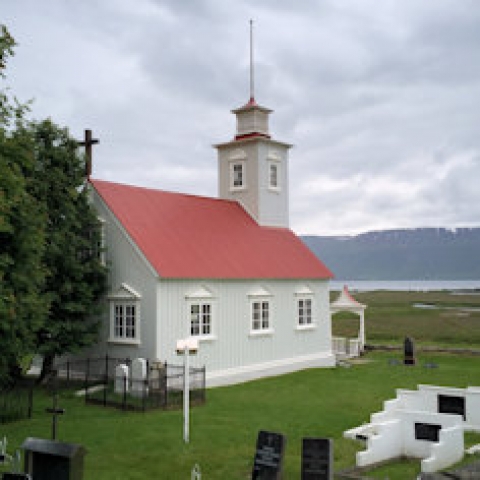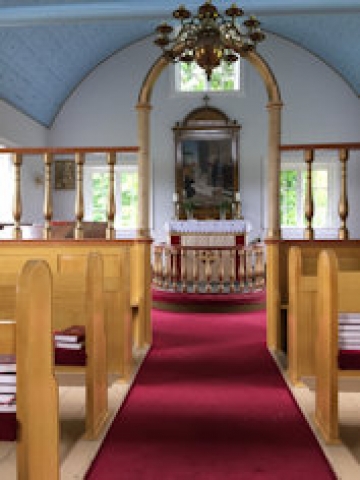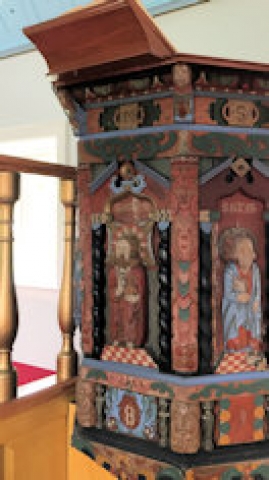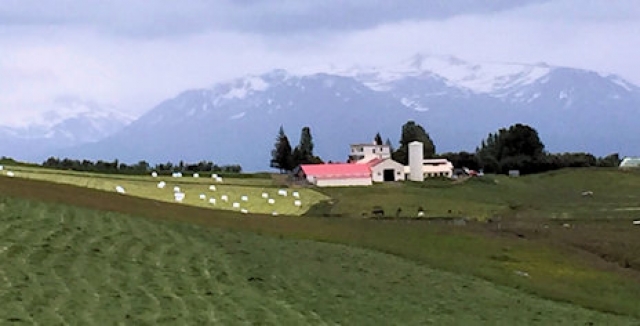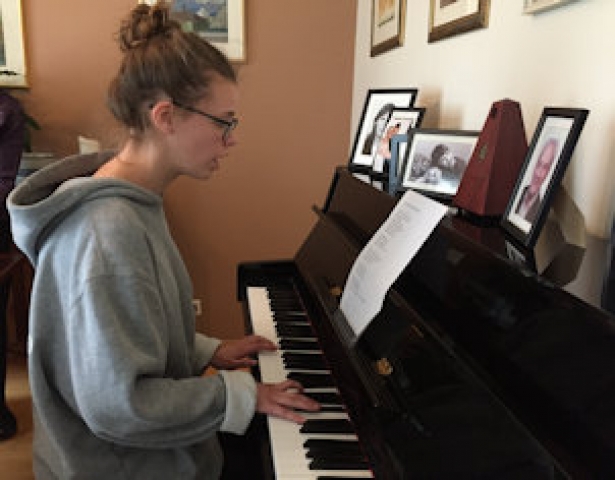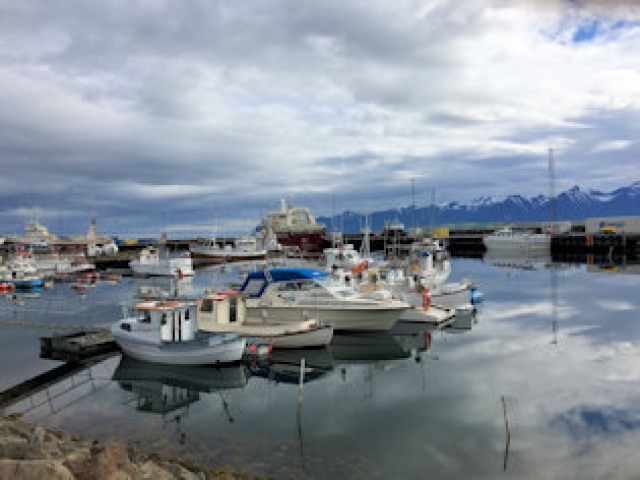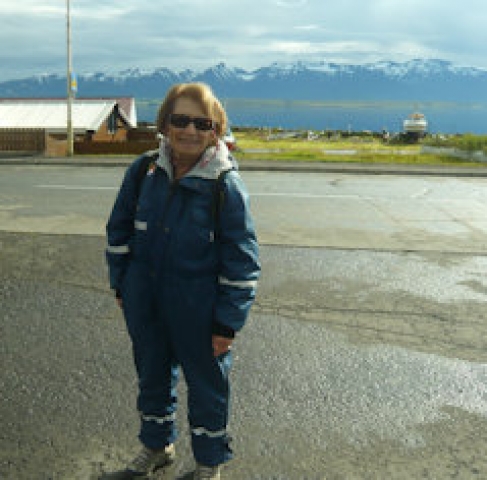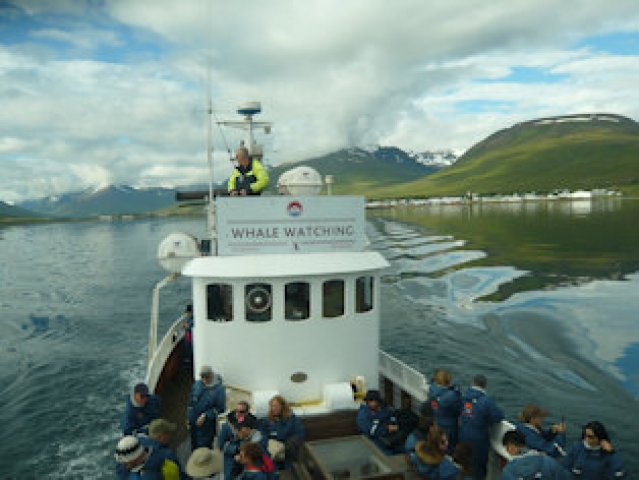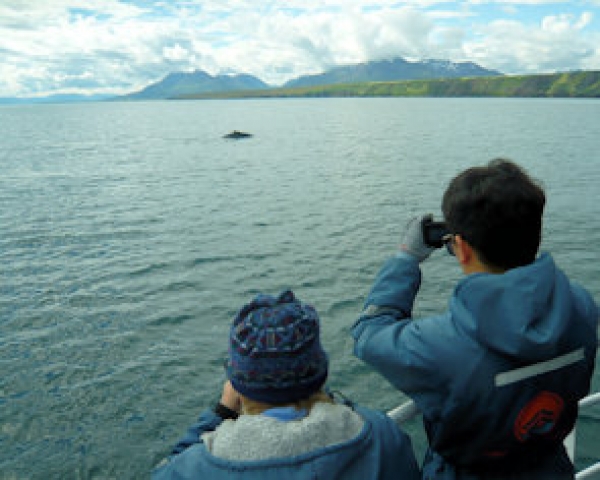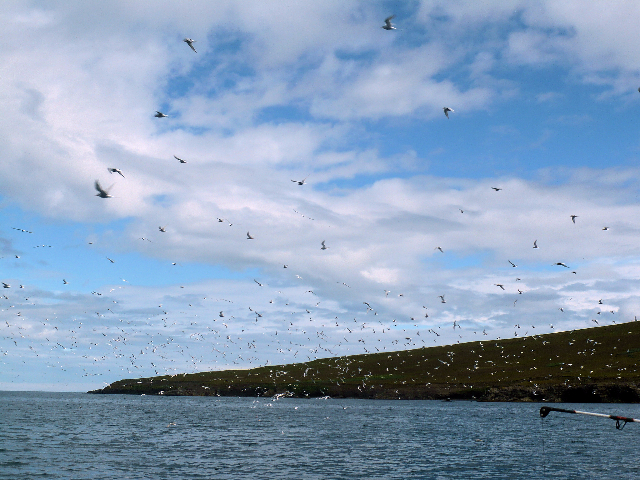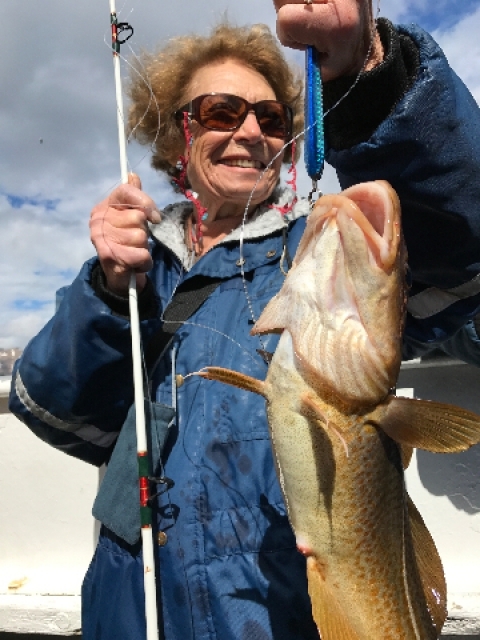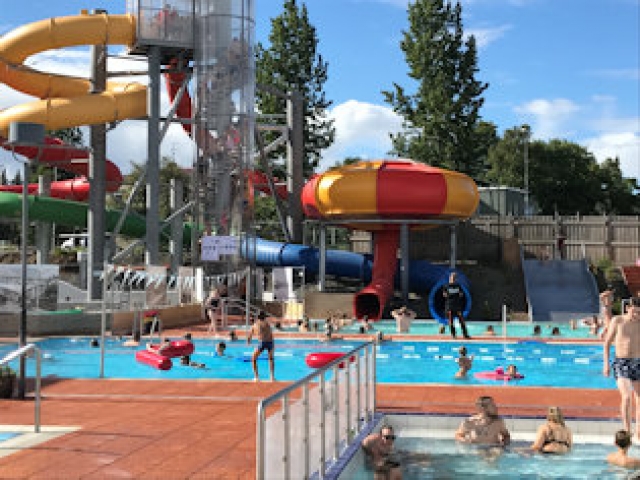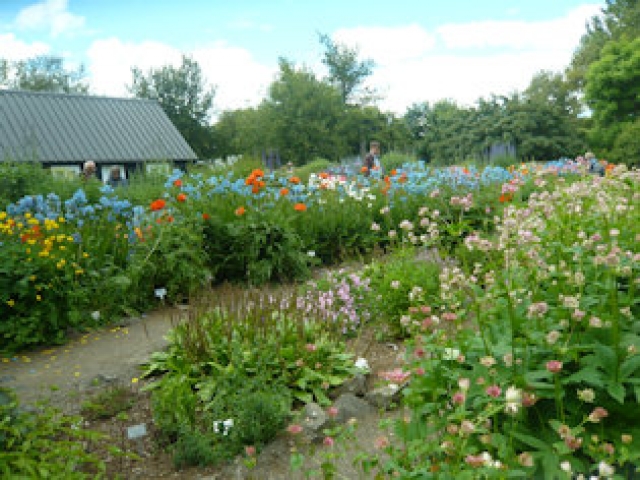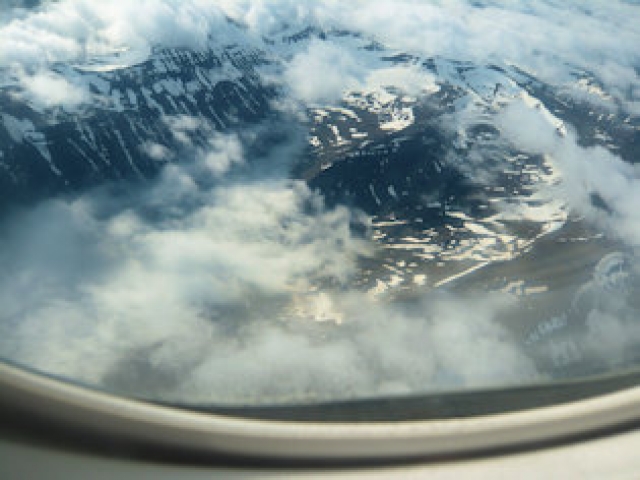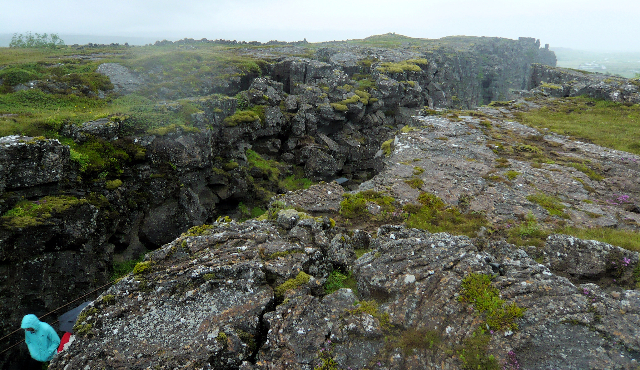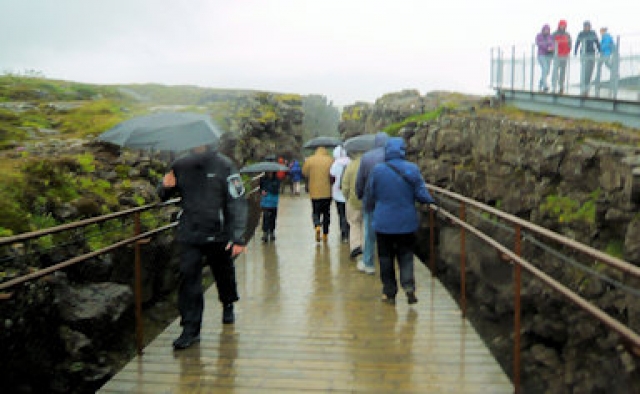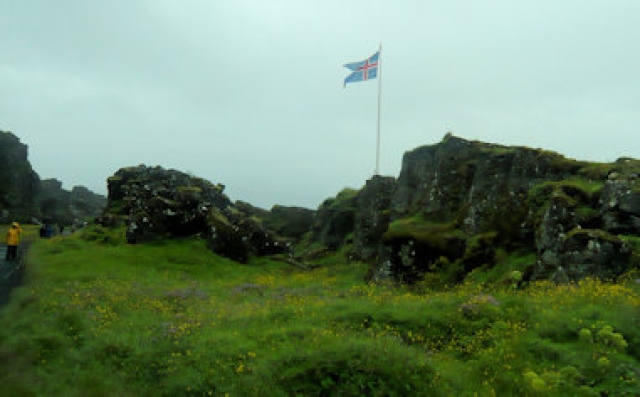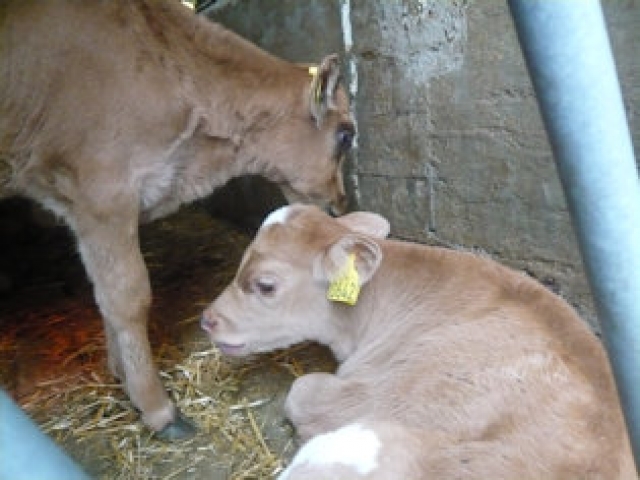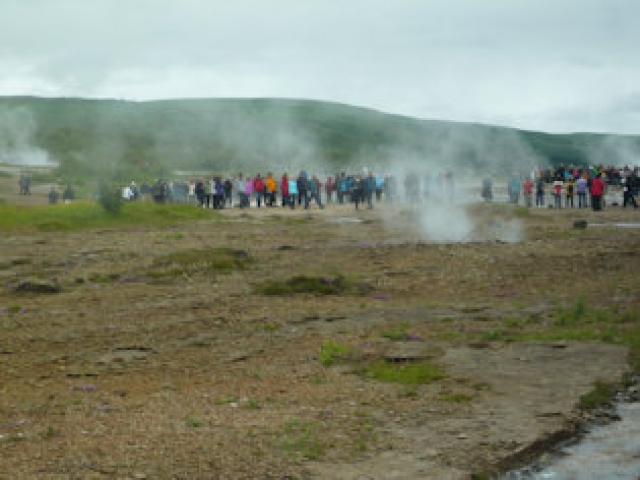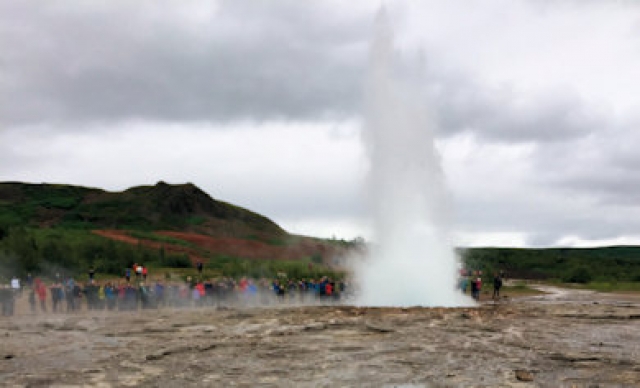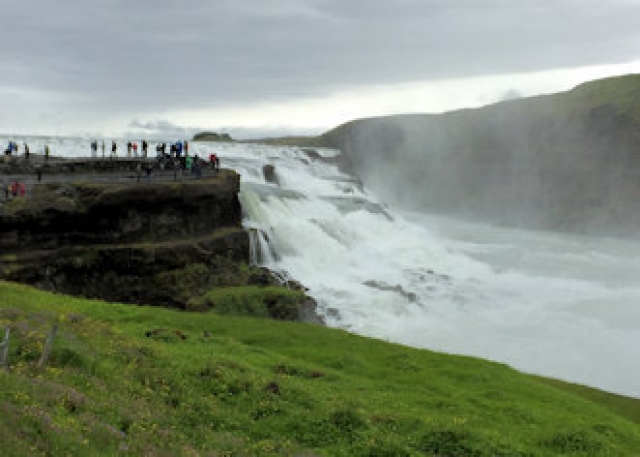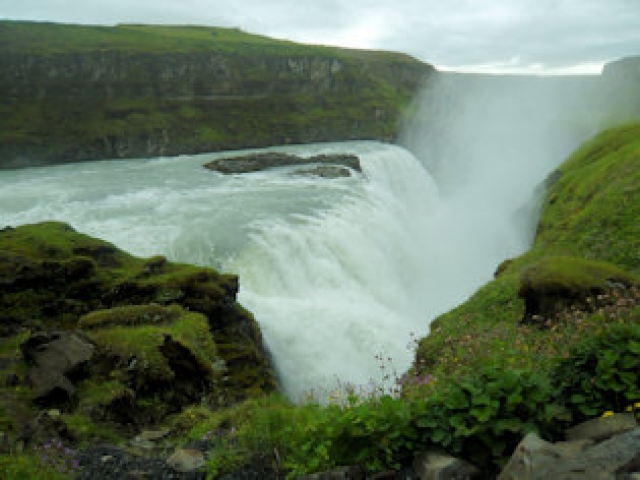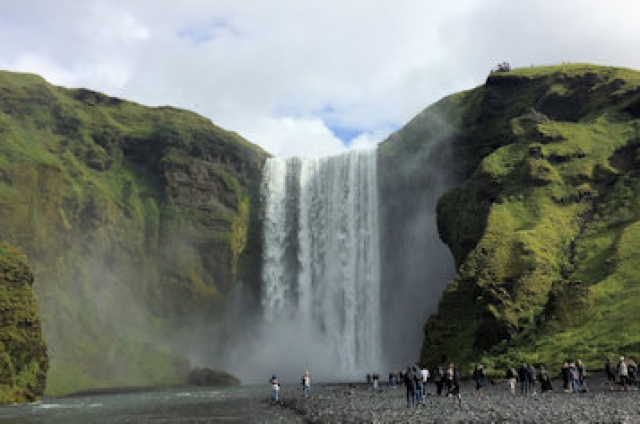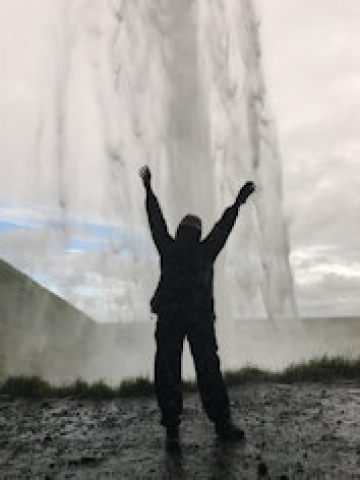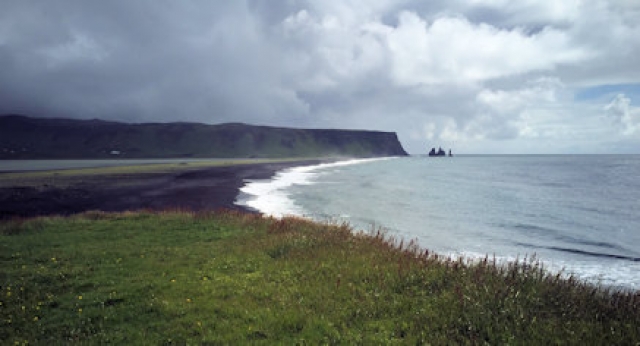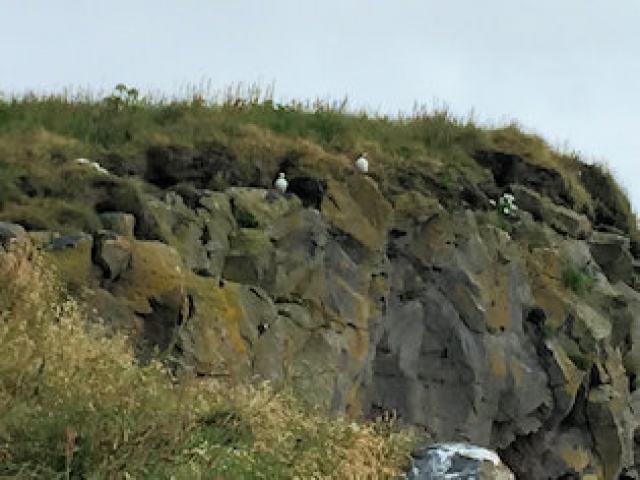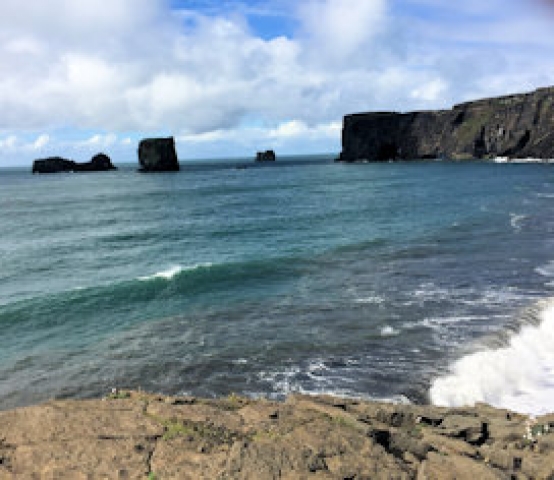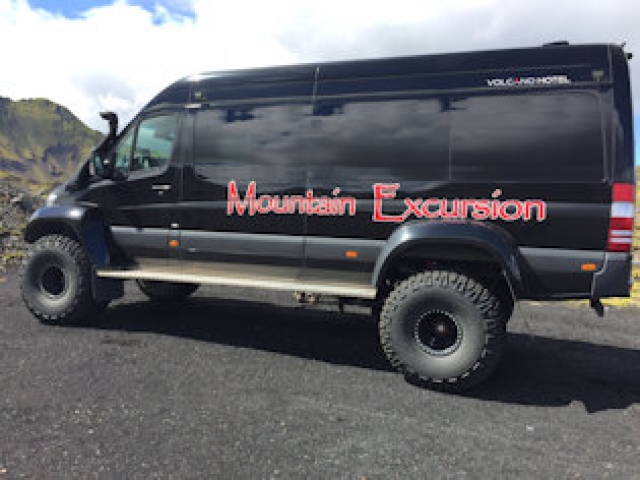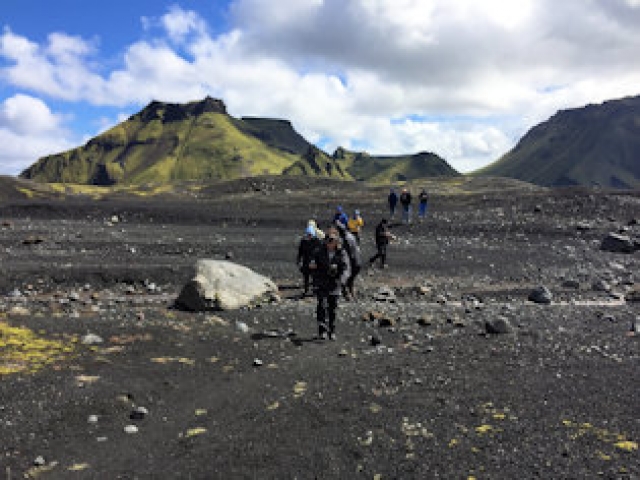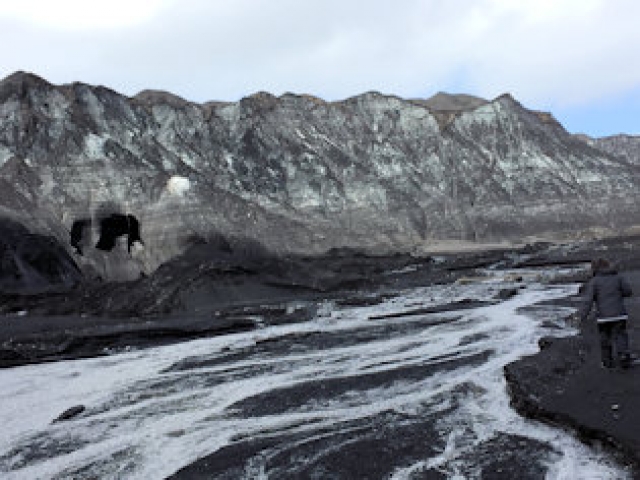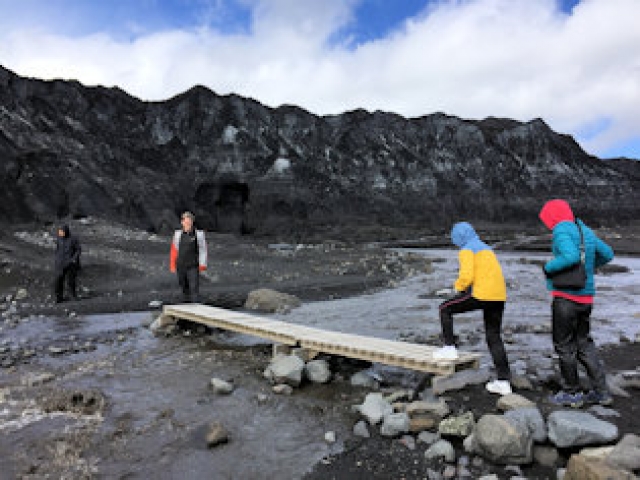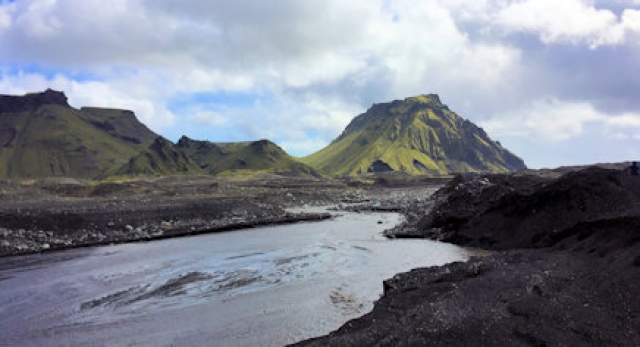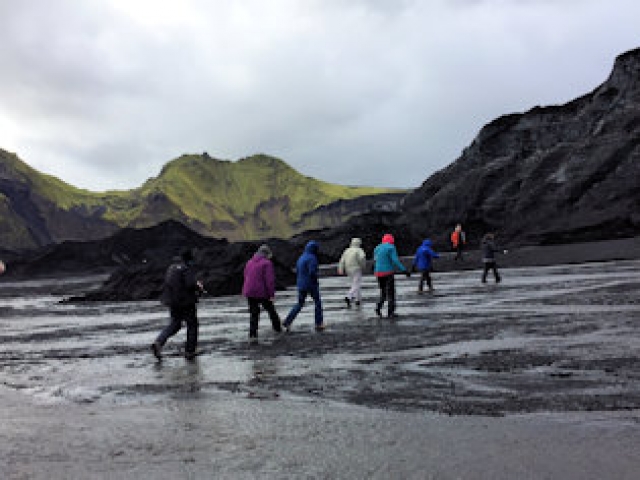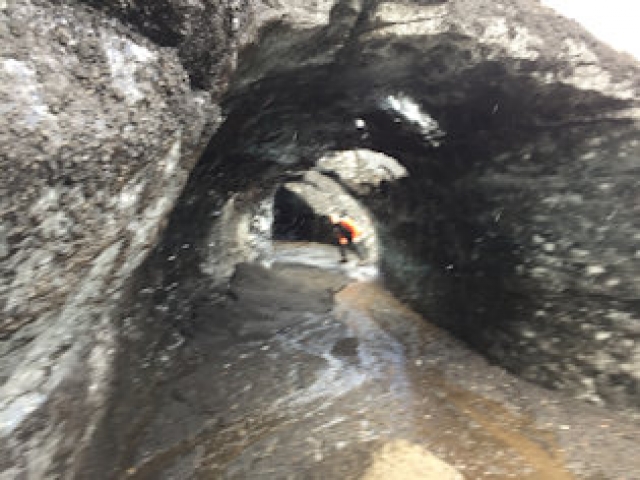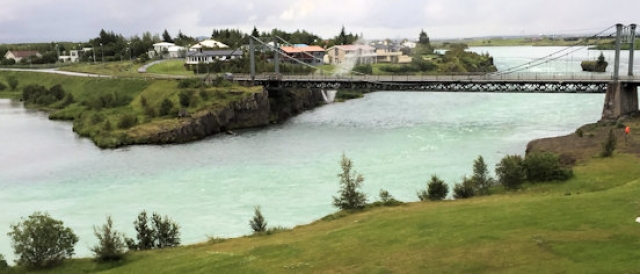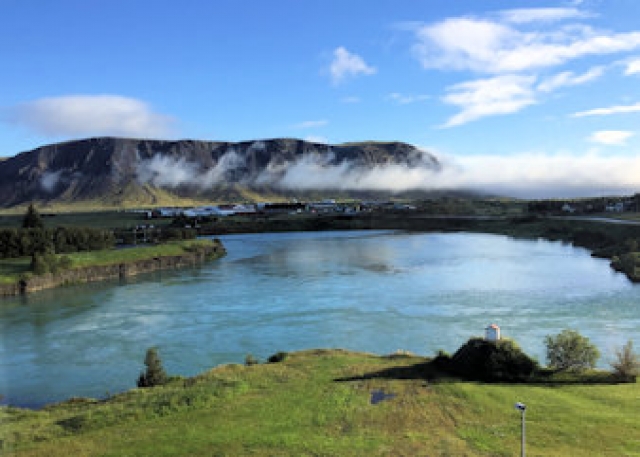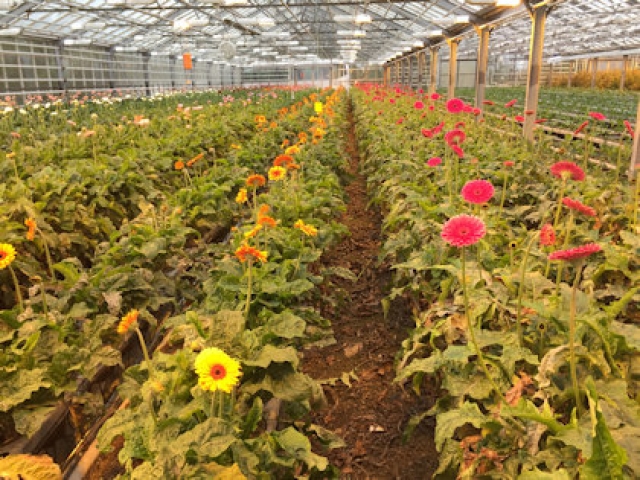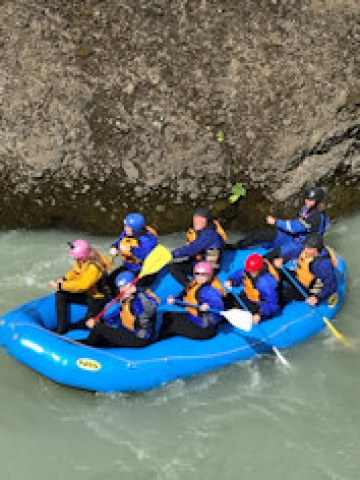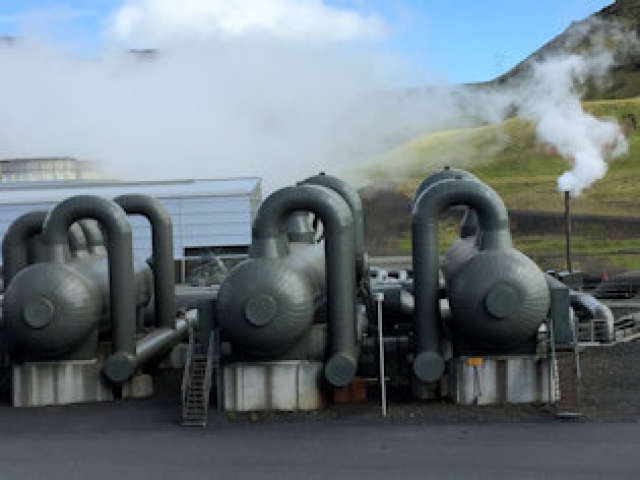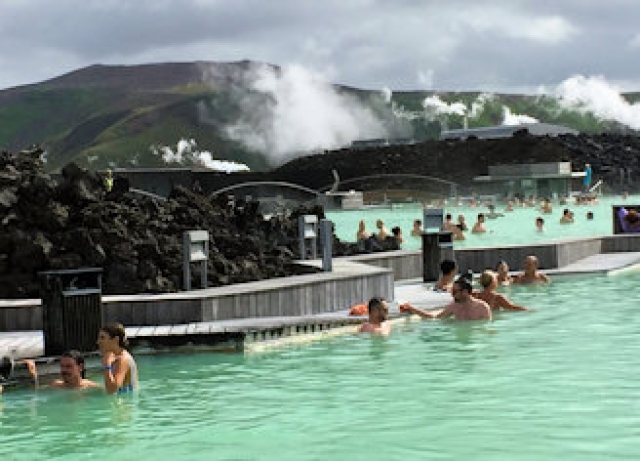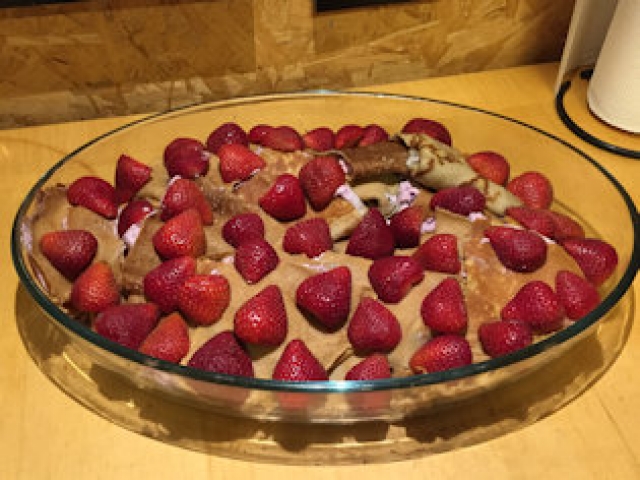Iceland: Part Three
Wonders of the North and South Coasts
By: Zeren Earls - Sep 05, 2017
After a wonderful two-day immersion in western Iceland, we departed from Stykkishólmur, venturing north overland and stopping frequently at various points of interest which broke up the lengthy journey. Following a scenic coastal route with views of horses grazing, we made an impromptu stop to get acquainted with Icelandic sheep dog guarding goats nearby. A pure-bred dog with a bushy tail, the Icelandic dog is Norwegian in origin, like most animals of the country.
Back on the road, our overland journey was a good opportunity for Baldur, our trip leader, to give us background information about Icelanders, who are highly educated people. Initially home-schooled, children have been attending school since 1907. Compulsory education for children 6-16 is free; kindergarten education is subsidized by municipalities. The country has seven universities, all of which are free. Currently one third of the population is enrolled in school. All Icelanders under the age of 50 speak English.
The first major stop of our journey was the Eiríksstaðir Museum, the site of what was once the home of Erik the Red, father of Viking Leif Erikson. Excavated ruins of the farm have revealed walls of turf over a foundation of rocks. Here we travelled back in time to experience how people lived 1000 years ago. A guide dressed in Viking costume informed us about the Viking era; we listened, sitting on low beds covered with animal furs.
Continuing our trip north, we then visited the Gauksmýri Horse Farm. Sitting on raked wooden benches, we watched a horse show where riders demonstrated different gaits, including two unique to the Icelandic horse with its sturdy build. In one instance, the rider successfully sipped beer as she demonstrated the tölt, or running walk – a smooth run which does not shake the rider. Our visit to the stables allowed us a closer look at the beautiful long-maned horses, developed from ponies taken to Iceland by Norse settlers in the 10th century. Lunch at the farm consisted of self-service cauliflower soup and salad bar. The gift shop had a tasteful selection of horse-related items, including T-shirts, which I could not resist buying.
Our final destination of the day was Akureyri, Iceland’s second largest urban area, situated on the northern fjords near the Arctic Circle, where we spent two nights. Following dinner at the hotel, we explored the compact town on foot. Starting at the basalt Akureyrarkirkja church, which dominates the town, we descended the stairs, lined with flower beds, to the main shopping area, where town life takes place. The landmark Bautinn restaurant sits on a bustling crossroads, where two giant people dressed as trolls provided an amusing photo opportunity. Continuing our walk, we watched young boys splashing in a miniature waterfall despite the chilly weather and returned to the hotel, viewing some fine mansions along the way.
The Akureyri region is dotted with numerous natural attractions within easy reach. Our first visit was to the spectacular Goðafoss waterfall (“waterfall of the gods”), where the current carries rushing water along the Skjálfandafljót glacial river and over the rocks, falling 40 feet into a pool below. The waterfall derives its name from an event that took place in the year 1000, when a leading parliamentarian led the Icelanders’ decision to adopt the Christian faith, by throwing his statues of pagan gods into the waterfall.
Lake Mývatn (“Midge Lake”), named after the tiny flying insects that emerge during the summer months, offered a fantastic display of geological wonders, with the region’s combination of craters, hot springs, bubbling mud pools, and lava fields. Starting at Skútustaðir, we arrived at the Hverir geothermal field, a pseudo-crater of hot sulphur springs created by cold groundwater seeping down to magna infusions; transforming into steam as it heats up, the water then returns to the surface mixed with fumarole gas, containing sulphur hydroxide, which is responsible for the smell. Following paths across the multicolored clay surface, we observed bubbling mud pits, steaming rocks and vents, at times shrouded by the mist they generated.
Following a narrow ring road connecting the various points of interest around the lake’s 14-sq-mile area, we then reached Dimmuborgir (“Black Castles”), the result of a 2000-year-old volcanic eruption. Lava formations of various sizes with contorted shapes, dykes and gaps in between invite the visitor to imagine who might be inhabiting the “black castles”. The rocks are also referred to as “Troll Rocks”, based on a folk belief that trolls live here in a big cave.
Enjoying tranquil views of Lake Mývatn, which is also a breeding ground for birds and ducks, we traveled overland back to Akureyri. We stopped on the way at Laufás, a beautifully situated ancient manor farm looking out over Eyjafjörður, with a small white church and 19th-century farmhouse museum. The history of turf-clad timber building stretches back to the middle ages; rebuilt as needed, the house with its current gabled front goes back to 1882, when it served as a vicarage. Housing 20-30 people at a time, the dirt-floor building with its roof of irregularly shaped planks was last inhabited in 1936. The interior displays range from a kitchen where dry sticks were used as fuel to dining areas upgraded as new areas were added. Part of the National Historic Buildings Collection, Laufás is managed by the Akureyri Museum. The classical Laufás Church, built in 1865, has a well-equipped interior with a hand-carved pulpit.
Back in Akureyri, our home-hosted dinner in the evening was an opportunity to visit with the director of the Akureyri Museum and his family. We were treated to a dinner of trout, accompanied by potatoes and red peppers, and followed by date nut cake with caramel sauce and whipped cream for dessert. After dinner, the teenage daughter of our host family of three played the piano for us.
In the morning, a 30-minute ride north of Akureyri took us to the small fishing village of Dalvík on Eyjafjörður’s eastern shore. Dalvík is known for its Big Fish Day, when the entire country is invited to the homes of residents to have fish soup. The purpose of our visit was to go on a whale-watching excursion. Donning warm overalls, courtesy of the tour company, we thus ventured out on a three-hour boat trip in the waters of the Northern Atlantic with 58 passengers on board. The scenic trip rewarded us not only by letting us spot whales, but also with an opportunity to fish off the boat. Shortly after I let down my fishing pole in the water, I had a large cod on the hook. As Arctic terns hovered overhead and rushed to the boat to get scraps, the attendants cleaned and grilled the fish for us to enjoy before we returned to the harbor. This was one memorable trip!
Back in Akureyri, we had an opportunity to hear a lecture at the University on Fisheries in Iceland and the Quota System. The fishing industry is the backbone of Iceland’s economy, comprising 40% of the export market. Individual transferable quotas have been bought up by big fish companies, four of which control the entire market. Fisheries Management monitors the industry to ensure sustainability and economic benefit. Whale hunting is limited to 100 whales per year, and fishing to 88 kilos per day, Monday-Thursday, from May through August. The quotas are monitored online. Following this informative lecture, we visited the Botanical Gardens near our hotel, where I had char fish with salade niçoise for dinner – delicious.
In the morning, we took an early flight from Akureyri to Reykjavík. Flying over snow-capped mountains, we reached our destination 35 minutes later, then continued overland to Þingvellir (Thingvellir) National Park, the first of three natural highlights named the Golden Circle. It was a cold, rainy and windy day, made worse due to the park’s exposed location. Donning rain gear and braving the elements, we walked to a spot where the two halves of Iceland – the Eurasian and North American tectonic plates – are pulling apart about 2 cm each year. There is a lookout point at the top of the fissure, with views of the Þingvellir plains.
Continuing on a path through the scattered lava rock, we reached a natural amphitheater, where the Alþingi (Althing), the Icelandic parliament, was founded. Considered the world’s oldest existing parliament, the Alþingi is marked by the Lögberg (“Law Rock”) and a flapping blue Icelandic flag with a white-bordered red cross – blue for the ocean, white for glaciers, and red for lava or fire. This spot is where the Viking legislature met to debate laws in 930 AD.
During our noon break, we stopped by a dairy farm, where I enjoyed a cone of rich and delicious ice cream, made on the premises, in addition to purchasing a pair of wool socks. Back on the highlight circuit, we arrived at Geysir, the geyser from which all others take their name. Geysir has been dormant since 2000; however, we visited the nearby Strokkur, which erupts every 5-10 minutes. Along with other visitors, we waited around through several impressive eruptions of the geyser.
Our Golden Circle tour ended at the majestic Gullfoss (“Golden Falls”) waterfall, which produces a roar audible from far away, as the three tiers of rushing white water of the Hvítá River, fed by the Langjökull (“Long Glacier”), flow into a hundred-foot-deep ravine. Based on the number of people milling around, the Gullfoss seemed to be one of Iceland’s most popular tourist attractions.
Continuing overland to the southwest, we reached Selfoss, southern Iceland’s largest town, where we spent two nights, on the banks of the Ölfusá River and at the crossroads of many attractions. Over our buffet dinner, it became evident that the hotel had reached capacity, as people jostled to get to the plentiful spread. In the past five years, the number of visitors to Iceland has grown so rapidly that the industry is working hard to accommodate the growth.
In the morning, we visited the Þorvaldseyri (Thorvaldseyri) Visitor Center to learn more about Iceland’s volcanos, which number over 100. In the past few centuries Iceland has experienced some eruption every five years on average. We watched a touching 20-minute film, The Eyja Fjalla Jökull Eruption, about the effect of the 2010 volcanic eruption under this glacier, which forced farms and settlements south of it to be evacuated. The resulting black ash cloud, which reached a height of six miles, brought airplanes across Europe to a standstill for six days in April, creating havoc in the global economy.
Traveling about 45 minutes overland, we then reached the south coast, known for its spectacular scenery and plentiful Arctic char. Following a lunch of char fish, we started at the Seljalandsfoss, a waterfall which drops about 200 feet over rocky cliffs. Walking uphill, we were able to go behind the water curtain, which made us look like giant shadow puppets on a screen.
Dyrhólaey (the “hill-island with the door-hole”) is a promontory off the coast of Vík, Iceland’s southernmost town. The name refers to a gigantic black arch of lava that extends out to sea. In the summertime the cliffs attract puffins, which we were fortunate to see. After enjoying Vík’s dramatic North Atlantic coastline, with waves crashing on a long beach of black sand, we went off-road on a “Super Jeep” excursion.
Traveling north of Vík in an oversized Icelandic four-wheel drive vehicle, we toured the glacier region of the Katla volcano. Distinguished by its flat top, Katla last erupted in 1918. There have been small eruptions since then, but not strong enough to penetrate the volcano’s ice cap. Against a backdrop of ice mountains covered in black ash, we crossed over the plains of the glacial Markarfljót river, which flows through narrow gorges in the mountains, picking up sediment on its journey to the Atlantic. Unlike mountain rivers, glacial rivers have no vegetation along their banks. Following this learning and discovery, we returned to Selfoss for our final night in southern Iceland.
Traveling overland to Reykjavík the next morning, we stopped at a flower farm on geothermal land, where cut flowers purchased from Holland were grown in a vast greenhouse powered by thermal energy. Roses, lilies, and other species grown in pumice-enriched soil were sold only at the local market, as Iceland does not export flowers. A workforce of 14 worked at the farm, the majority tending to roses, which require cutting daily. One bouquet of mixed flowers sold for $50.
The day’s highlight was a rafting expedition on the Hvítá glacial river. Donning wetsuits, helmets, waterproof shoes, and life vests, we boarded inflatable rafts and paddled through rock formations on either side of the river. As we went over raging rapids, we got splashed by frigid waters. Despite my many-layered clothing, including thermal underwear, I was very chilled and couldn’t wait to jump in a hot shower.
Continuing on to Reykjavík, we visited the Hellisheiði geothermal power plant just outside the city. Starting with an exhibition on the third floor, we descended the building, learning about electricity and heat produced from renewable geothermal sources, which account for more than 85 percent of primary energy consumption in Iceland, higher than anywhere else in the world. About 1000 geothermal fields have been located within the country.
At the end of the day, Baldur invited us to his home for tea. His mother arrived with a pie of layered pancakes filled with cream and topped with strawberries – delicious. Afterwards we returned to the Hilton Reykjavik Nordica, where we had stayed at the beginning of our Main Trip.
On our final day in Iceland we enjoyed a trip to the Blue Lagoon, a spa located 10 miles from the airport. The lagoon is a by-product of geothermal energy use, whereby heated mineral-laden water is pumped up from beneath the earth’s surface to generate electricity, also heating fresh water. This run-off water, rich in silica, salt, and other elements, has proven to have healing powers, encouraging the establishment of state-of-the-art spa facilities with sauna and steam baths. Protecting my hair with a shower cap and with my face lathered with white silica, I indulged in the healing waters of the lagoon for about an hour – a perfect ending to a wonderful trip.

